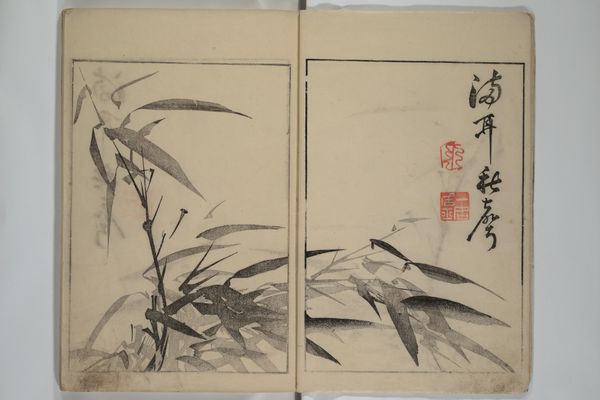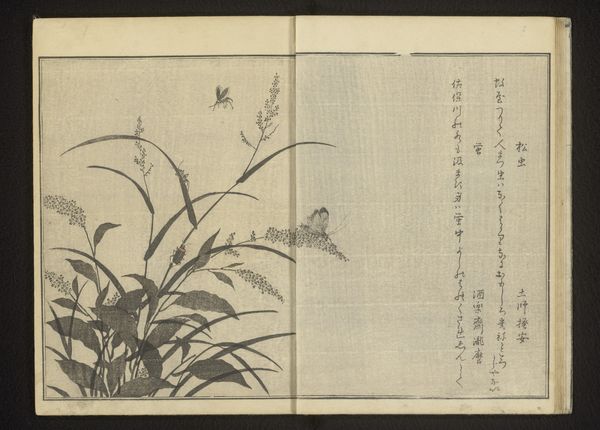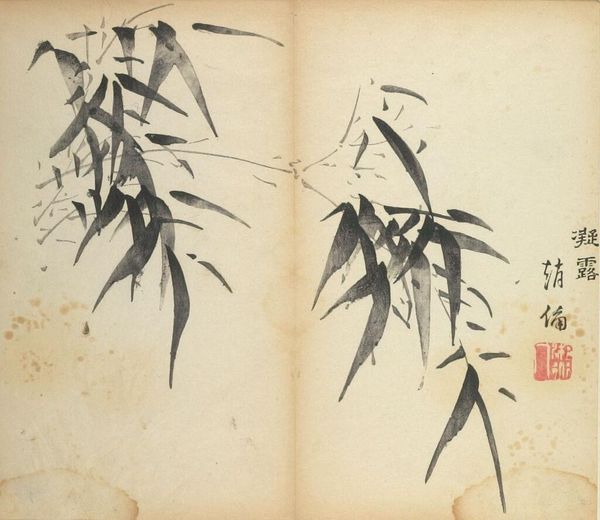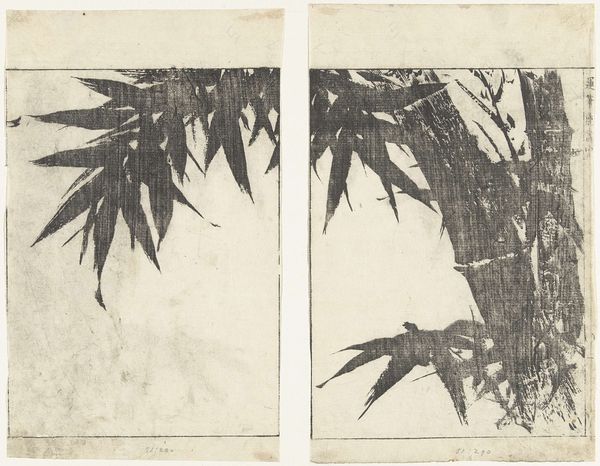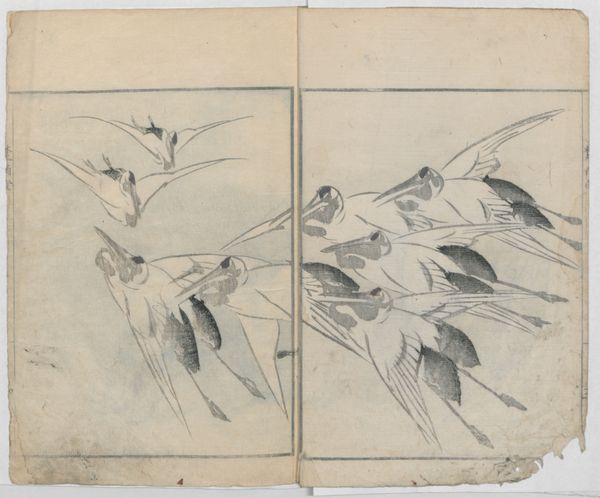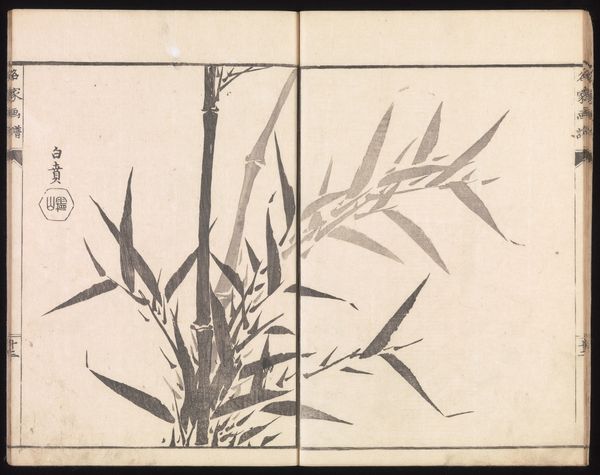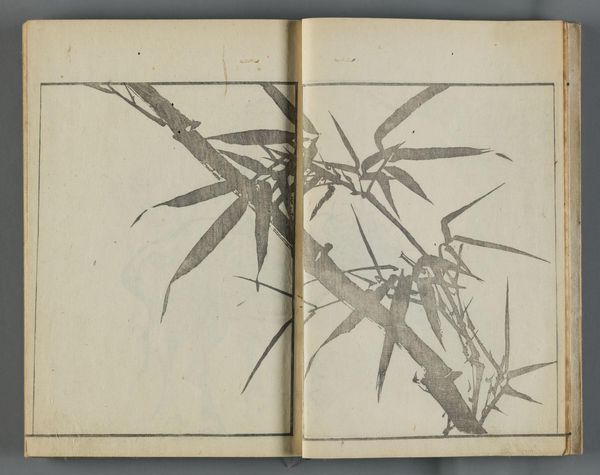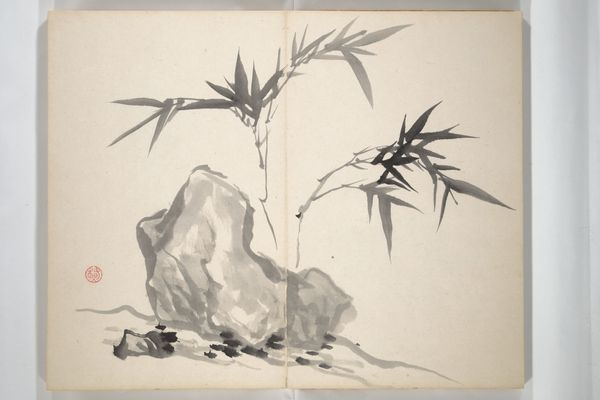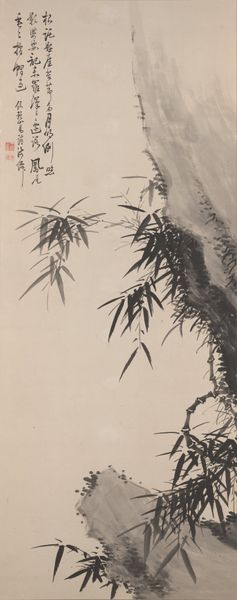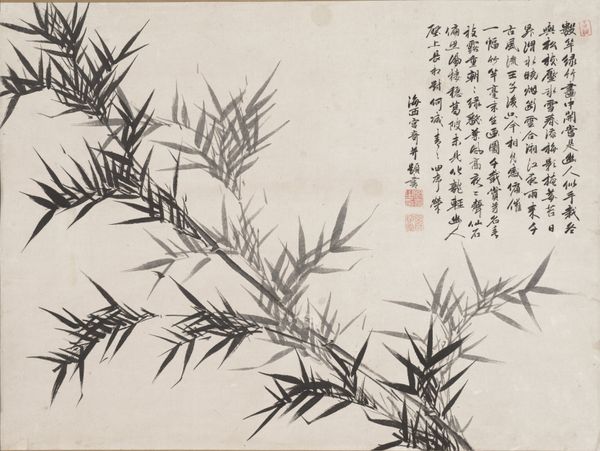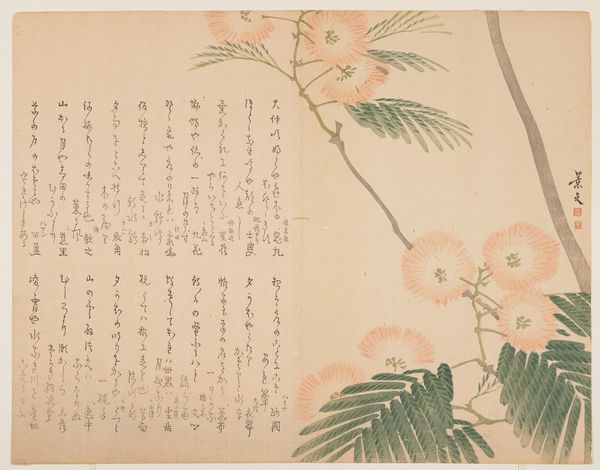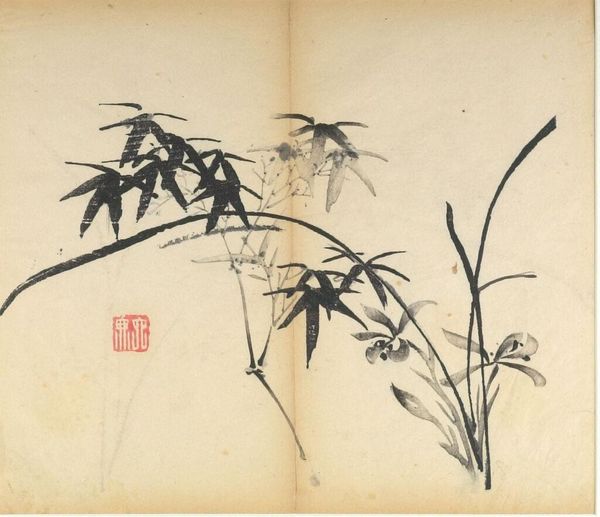
Kan'yōsai Picture Album (Kan'yōsai gafu) 寒葉斎画譜 1762
0:00
0:00
drawing, paper, ink
#
drawing
#
book
#
asian-art
#
ukiyo-e
#
paper
#
ink
Dimensions: each: 10 13/16 × 6 15/16 in. (27.5 × 17.7 cm)
Copyright: Public Domain
This is a page from the 'Kan'yōsai Picture Album' by Kan'yōsai [Tatebe Ayatari], created in Japan in the 18th century. The album, rendered in ink on paper, reflects the artist's deep engagement with the natural world and traditional artistic practices. Tatebe Ayatari, who worked under the artistic name Kan’yōsai, navigated a complex identity as both a scholar and an artist during the Edo period. This era was marked by rigid social hierarchies and neo-Confucian ideals. Yet, it also saw a flourishing of arts and culture. The album reflects the artist’s personal connection to nature. Each page offers an intimate glimpse into the artist's contemplative observations. The choice of bamboo as a subject here is significant. In East Asian art, bamboo is not only a plant, it's a symbol of resilience, flexibility, and moral integrity, embodying virtues admired in Confucian society. As you consider the ink strokes depicting the bamboo, think about what it means to represent these ideals through art. How does the depiction of bamboo reflect the artist's understanding and expression of these values?
Comments
No comments
Be the first to comment and join the conversation on the ultimate creative platform.
